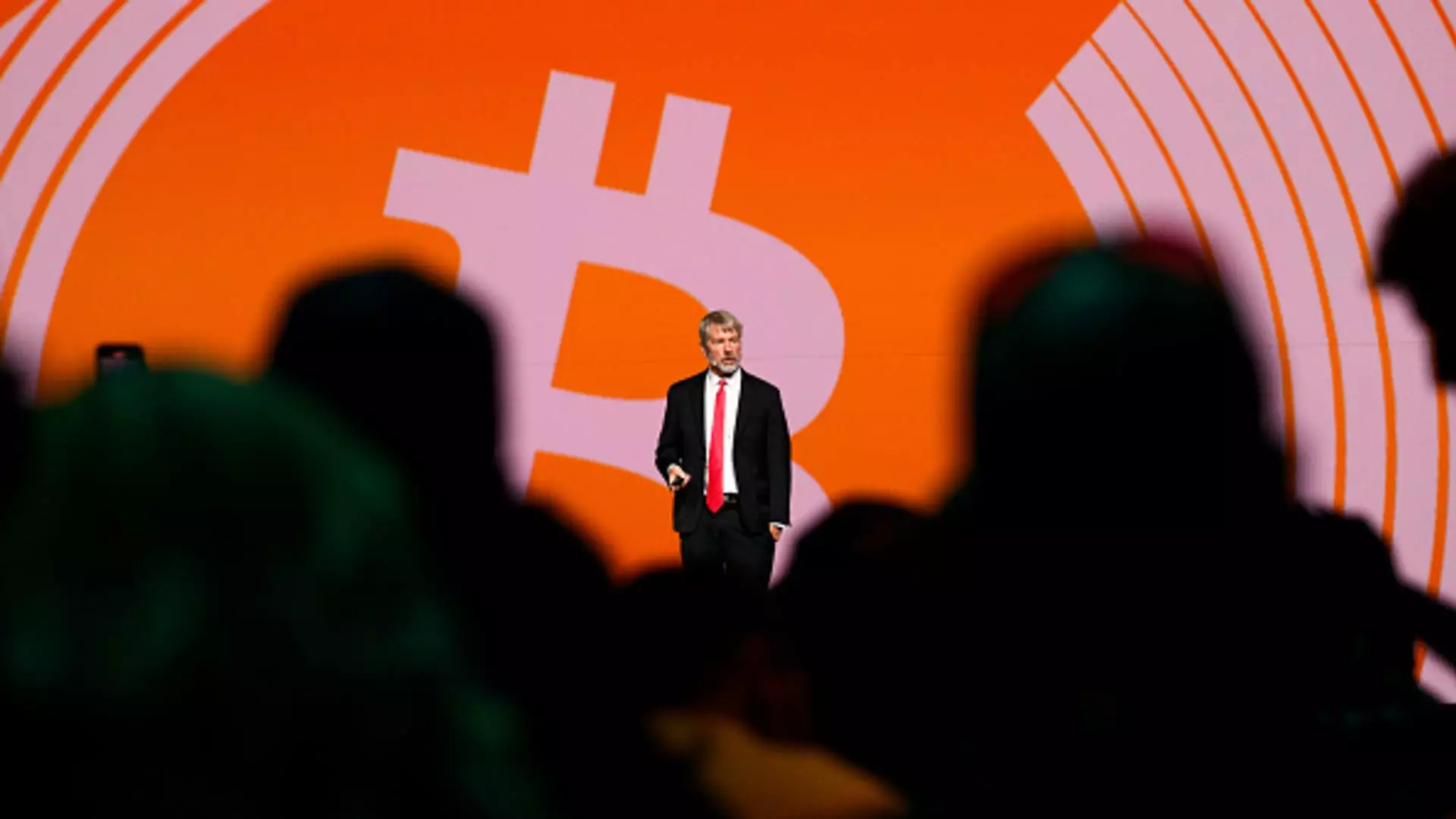In a world defined by rapid technological advancement, the once-specialized asset of bitcoin is making its way into the fabric of corporate finance. The astonishing surge in Strategy (previously MicroStrategy) marks a pivotal change, with its market capitalization soaring beyond $80 billion, largely due to strategic investments in bitcoin. This trend has caught the attention of various sectors, leading even meme stock companies and multinational corporations to dive into the volatile waters of cryptocurrency. As these entities announce their commitments to bitcoin, such as Trump Media’s ambitious $2.5 billion initiative and GameStop’s decision to invest $500 million, one has to wonder whether this enthusiasm is genuine or merely a superficial trend riding on the coattails of Strategy’s success.
The investment landscape has become saturated with speculation surrounding these announcements. While Strategy’s remarkable performance speaks volumes about the potential advantages of holding bitcoin, it’s essential to scrutinize the motivations of others entering the fray. After all, when the market reacts coldly—such as Trump Media’s shares plunging over 20% and GameStop down nearly 17% post-announcement—it raises the question of whether investors view these moves as opportunistic gimmicks rather than authentic commitments to a long-term strategy.
Historical Context and Evolving Regulations
Historically, corporate adoption of bitcoin faced resistance, especially during the Biden administration, where the narrative around cryptocurrencies treated them with skepticism, marked as potential regulatory issues. However, the recent strategic pivot initiated under Trump’s administration certainly redefined the conversation. The establishment of a U.S. Strategic Bitcoin Reserve reflects a significant shift in governmental attitude towards digital assets—moving from caution to recognition of its long-term store of value potential.
Furthermore, regulatory backing, such as the Department of Labor loosening guidelines on bitcoin in retirement planning, signals an impending mainstream acceptance of cryptocurrency. Yet, while this evolution in policy aims to fuel adoption, skeptics may worry it undermines the decentralized ethos that initially attracted investors. As the lines between government and corporate interests blurs in the bitcoin sphere, it prompts questions about the implications for individual autonomy and market integrity.
The Bitcoin Game: Volatility vs. Stability
While it’s easy to approach bitcoin as a disruptive and revolutionary financial instrument, notably explosive ideas often come with inherent volatility. The current excitement surrounding bitcoin treasury strategies brings momentary euphoria, yet also the risk of harsh realities crashing down on corporations that rush into the bitcoin investing arena without a well-constructed plan. For instance, just because companies like GameStop and Trump Media are trying to replicate Strategy’s momentum does not guarantee comparable success.
Indeed, the dynamics of capital raising, whether through convertible bonds or other means, can create short-term downward pressure that doesn’t necessarily reflect the underlying asset’s value—bitcoin. Saylor’s observations paint an optimistic narrative, insisting that concerns about structural financing should not overshadow the opportunity bitcoin offers; nevertheless, the cautionary tales of market overreaction highlight the difference between a short-term gain and a viable long-term investment strategy.
The Future of Bitcoin in Corporate America
As more corporate entities flock to embrace bitcoin, one cannot overlook the cultural narrative that accompanies this transition. Bitcoin has transcended its original identity as a mere digital currency to evolve into a symbol of resilience and autonomy in financial markets. Vice President JD Vance’s address to the bitcoin community marks a significant cultural lever—not just a technological shift—signaling that even the government recognizes the potential of cryptocurrency as a hedge against inflation and overreach from “unelected bureaucrats.”
However, caution must still prevail. Companies like Microsoft, which opted not to pursue Saylor’s bitcoin strategy, serve as a reminder that while the appeal of bitcoin is undeniable, the balance between calculated risk and financial prudence is delicate. A thoughtful approach toward investment in this digital gold is essential. For some, the Bitcoin promise might serve as a gateway to a future where they can truly reshape financial landscapes—if they prepare wisely, understanding the long-term implications of their decisions.
The current landscape creates a dual-edged sword: as some corporations rush headfirst into expansive bitcoin holdings, others maintain a more reserved approach, suggesting that the path to true bitcoin maturity will be shaped not just by adoption, but also by an ability to navigate the intricate details of corporate finance and market sentiment.

